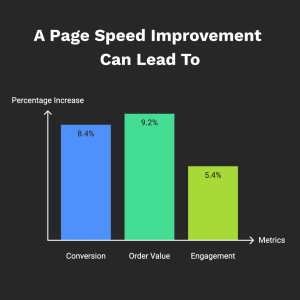The impression people have of your business often starts with your website. It’s your storefront, customer service desk, and brand ambassador all rolled into one. But what happens when your site goes offline or falls victim to a cyber attack?
Of course, the results can be brutal, including lost revenue, damaged reputation, unhappy customers, and even penalties in search engine rankings. The truth is, websites aren’t set and forget. Just like a car that needs regular servicing, your site requires ongoing maintenance to stay fast, reliable, and secure. No worries, with the right practices, you can minimize downtime and protect yourself from cyber threats.
Here are the top 7 website maintenance practices every business should prioritize.
1. Never Compromise on Hosting
Your hosting provider is the backbone of your website. If it’s weak, everything else, speed, security, and uptime will suffer. Many downtime issues can be traced back to unreliable or cheap hosting services.
When selecting a provider, look for:
- Uptime guarantee of 75.9% or higher
- Scalable plans that let you handle growth and traffic surges
- Built-in security features like firewalls and malware protection
- Help is always available when you need it
2. Enable Continuous Monitoring
What if your site goes offline at 2 a.m. and you are unaware until morning?
That’s hours of lost traffic, sales, and trust. This is why monitoring is also a part.
Tools like UptimeRobot, Pingdom, or Datadog constantly check if your site is up and performing as expected. The moment something breaks, you get an alert giving you the chance to fix it before customers notice. Monitoring also tracks performance over time, so you can spot recurring issues and address them before they cause serious downtime.
3. Optimize Performance with Caching & a CDN
Slow websites actually add unnecessary stress on servers, which can eventually lead to crashes. That’s where caching and Content Delivery Networks (CDNs) come in.
- Caching stores a copy of your website’s content by reducing the need to repeatedly fetch it from the server. This makes pages load faster and lowers server load.
- A CDN distributes your site’s files across global servers. Visitors automatically connect to the nearest server, speeding up access and reducing strain on your main hosting server.
Together, caching and CDNs act like an express lane for your website by keeping it fast, stable, and less prone to downtime.

4. Keep Regular Backups & a Recovery Plan
Even the most secure websites aren’t invincible. A cyber attack, server crash, or even a human error can wipe out your site in seconds. The difference between bouncing back quickly and losing everything comes down to backups.
A solid backup strategy should include:
- Automatic, scheduled backups (daily or weekly, depending on your site’s activity)
- Copies stored in multiple locations (like cloud storage and local devices)
- A clear disaster recovery plan so you know exactly how to restore your site if the worst happens
5. Update Software & Remove Vulnerabilities
Outdated plugins, themes, or CMS versions are among the most common entry points for hackers. Cybercriminals look for known vulnerabilities in old software, and if your site isn’t updated, you’re an easy target. Partnering with a trustworthy website maintenance company ensures regular updates and patches, keeping your site secure while also improving performance and compatibility.
Here’s what you should do:
- Update your CMS like WordPress, plugins, and themes regularly
- Remove unused plugins and themes, less code means fewer vulnerabilities
- Run regular security scans to identify and patch weaknesses
6. Plan for Traffic Spikes with Load Balancing & Scalability
A sudden flood of visitors, whether from a successful campaign, holiday rush, or viral post, can trouble your server and cause downtime. While it’s a good problem to have, it is still a problem.
To prepare, use:
- Load balancing, which distributes traffic across multiple servers to prevent overload
- Scalable hosting solutions, such as cloud hosting, that automatically allocate more resources during spikes
This ensures your site remains online and fast, even under heavy demand.
7. Strengthen Security
Finally, no website maintenance plan is complete without strong security. Cyber attacks are one of the leading causes of downtime and they’re becoming more sophisticated every year. Security is about keeping your website accessible and trustworthy for your visitors.
To stay protected,
- Use strong, unique passwords and enable two-factor authentication
- Install firewalls, anti-malware tools, and SSL certificates
- Limit admin access and regularly audit user permissions
- Keep your site under constant watch with malware scans and security monitoring
Conclusion
Website downtime and cyber attacks are a business risk more than a technical glitch. From lost sales to damaged reputation, the cost of neglecting maintenance is far greater than the effort it takes to prevent issues in the first place.
By focusing on these 7 essential practices, choosing reliable hosting, enabling monitoring, optimizing with caching and CDNs, keeping backups, updating software, preparing for traffic spikes, and strengthening security, you’ll dramatically reduce downtime and protect your site from threats.
Your website is your digital lifeline. With consistent maintenance, you can keep it online, secure, and performing at its best and ready to serve your visitors 24/7.